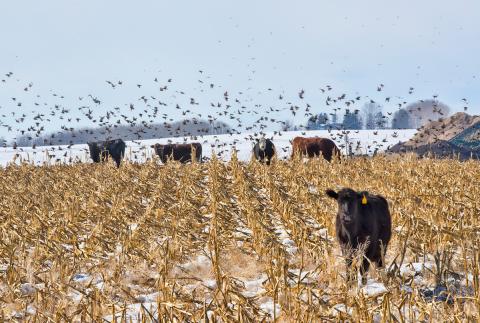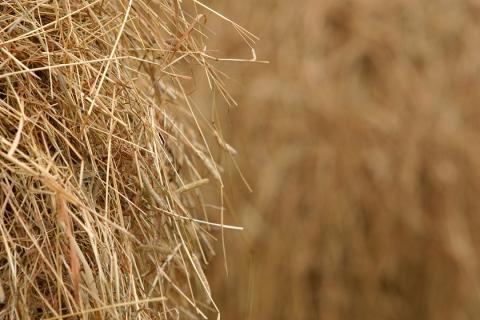Funds Available to Help Restore and Protect Rangeland
January 31, 2023
Landowners interested in receiving funding to address the spread of invasive woody vegetation on rangeland should apply at their local NRCS field office by Friday, Feb. 17, 2023.
Pasture and Forage Minute: Grazing with Snow Cover, Forage Inventory
January 31, 2023
Insights on the importance of snow cover for pastures and its impacts on livestock, and taking inventory of feed resources for the remainder of winter.
Pasture and Forage Minute: Planning Spring Annual Forages, More on Deciphering Hay Tests
January 31, 2023
Extension educators review considerations for spring annual forages in Nebraska, and analyze RFV and RFQ estimates in hay tests.
Pasture and Forage Minute: Hay Protein and Energy Values, Reducing Hay Losses
January 19, 2023
Breaking down the importance of protein and energy values in hay tests, and tips on reducing fed hay losses.
Pasture and Forage Minute: Mid-winter Cornstalk Grazing, Pasture Lease Drought Considerations
January 13, 2023
Extension educators discuss to how best graze cornstalks during the winter, and how to approach pasture leases when severe drought has affected forage production.
Pasture and Forage Minute: Preparing for a Productive 2023
January 12, 2023
Ben Beckman and Daren Redfearn of Nebraska Extension share some predictions and recommendations on grazing and forage production in 2023.
Pasture and Forage Minute: Deciphering a Hay Test, Using Bad Hay and Silage
January 5, 2023
Nebraska Extension Educator Ben Beckman explains how to accurately read and use a hay test, and options for using low-quality hay and silage.
Pasture and Forage Minute: Snow Cover for Alfalfa, Critical Cold Considerations
January 5, 2023
Extension educators review ways to maximize the benefits of snow cover on alfalfa and maintain animal health during periods of extreme cold and wind.







